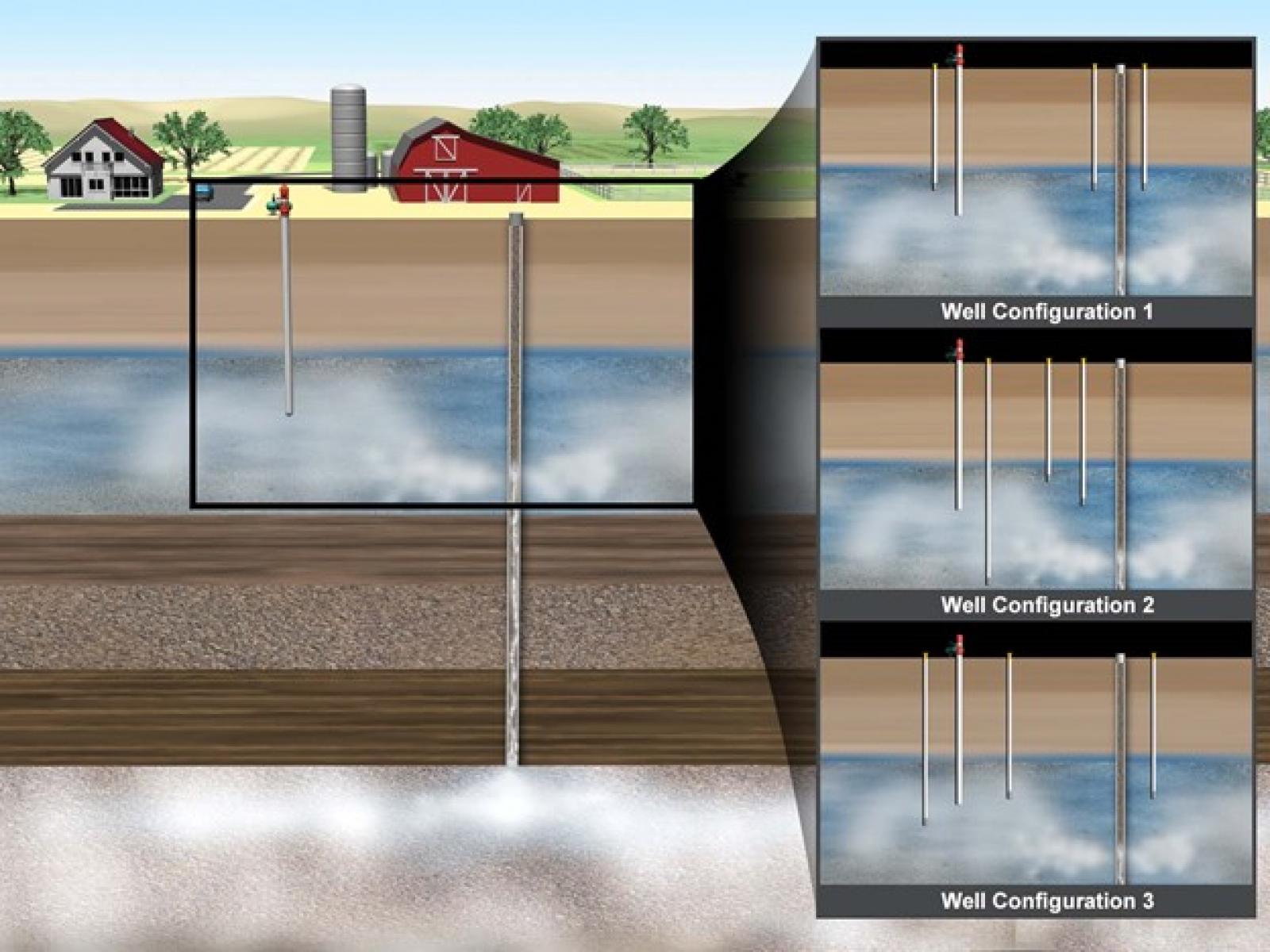An Update to Award-Winning Carbon Storage Sensor Software
Software designs sensor networks to monitor carbon sequestration

Pacific Northwest National Laboratory-led software analyzes model output to identify the best network for monitoring proposed carbon storage setups.
(Illustration by Mike Perkins | Pacific Northwest National Laboratory)
Reaching net-zero carbon emissions on a global scale requires finding ways to capture and store carbon dioxide (CO2). One option is pumping CO2 gas deep underground into geological storage. While getting CO2 underground is complicated, the challenges don’t stop there.
Any large reservoir of CO2 must be monitored for leaks. This involves setting up a network of sensors to identify spikes of CO2. Anyone operating a geologic carbon storage site needs to decide whether to spend more on installing sensors underground, which gives more accurate information, or go the more cost-effective, but less accurate route with aboveground sensors.
Software developed at Pacific Northwest National Laboratory (PNNL) helps users solve this complex problem and design the best monitoring network for geologically stored CO2. Designs for Risk Evaluation and Management (DREAM) uses data from common geological models to devise an optimal network for CO2 monitoring.
Developed since 2012, DREAM is currently on version 3.0. The latest updates, released in August 2022, add substantial flexibility to types of sensors, the algorithms, and the objectives of the monitoring network. DREAM 3.0 also generates advanced plots that allow decision makers to explore the trade-offs between different monitoring networks.
“This new iteration of DREAM considers more objectives for monitoring designs,” said PNNL environmental engineer Jonathan Whiting. “The software now lets users compare the cost of the monitoring system, the size of a leak, and the time it takes to detect a leak. This gives a richer and more realistic view of how these systems might be operated.”
DREAM is part of the Department of Energy’s National Risk Assessment Partnership. NRAP seeks to quantitatively assess and manage long-term environmental risks of geologic carbon storage amidst uncertainty. It can integrate into other NRAP-managed tools to explore different random scenarios that might affect stored CO2.

Streamlining complex problem solving
The development team designed DREAM to be useful to a broad range of people. DREAM was intentionally designed to effectively run on a personal computer rather than a large computing cluster.
“In this new update, we had a lot of folks test the interface,” said PNNL data scientist Alex Hanna. “DREAM 3.0 has a new range of visual outputs that help users visualize the data. We think there’s a lot of power in these visuals.”
DREAM 3.0 incorporates a faster and sturdier algorithm to find a solution in less time. This allows users to experiment with different priorities more easily and understand how they influence the final monitoring network.
“DREAM 3.0 allows a user to minimize cost and design an optimal monitoring strategy with multiple well- and surface-based technologies,” said PNNL computational scientist Diana Bacon. “It is a critical component of NRAP’s mission to release tools to help site operators manage risks associated with geologic carbon storage.”
DREAM 3.0 is free to download and can be accessed here.
Published: August 15, 2022